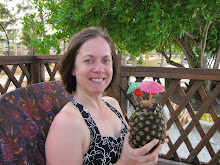 |
| Angkor Wat |
Well, I have to admit I'm pretty much a failure at timely blogging. I know it's been ages and I haven't written due to a lack of stuff to write about but more lack of time for blogging. I'm going to try and get caught up:
In June we traveled to Siem Reap, Cambodia. This was definitely my favorite trip so far. Siem Reap is where the temples from the Khmer reign are located. Angkor Wat is one of the 7 wonders of the world and Ta Prohm claims fame as the location where Lara Croft - Tomb Raider was filmed. I booked the trip as a package through an airline travel agent. When I got the itinerary it listed a craft workshop and silk farm, both of which sounded promising.
 |
| Ta Prohm, photo op from Tomb Raider |
The main focus of our trip was to see the temples; this was not a textile trip. We had an excellent guide and driver both of whom spoke English well. The temples of Angkor were built from the 7th – 12th centuries. It is amazing to think of buildings of this size and architectural complexity being built that long ago and surviving today. The sheer size of the buildings and number of carvings is mind boggling.
We could not help but notice the extreme poverty in Cambodia. Everywhere we went there were small children begging and selling trinkets. The country is still recovering from the atrocities of the Khmer Rouge in the 1970’s. We saw quite a few land mine victims, some of whom were recent victims. The main goal of organizations helping Cambodians is to teach them ways to help themselves. One local organizations motto is “Help up, not hand out”.
Half way through our second day of temple touring our guide said we were going to visit the Artisans d’Angkor workshop. The Artisans d’Angkor is an amazing workshop where people from villages around Cambodia are brought to learn a trade. Their options are silk weaving, silk painting, wood or stone carving, silver plating, and lacquer work. There are 15 workshops around Cambodia where after training in the main workshop in Siem Reap they can work. At the Siem Reap workshop you can watch all of the crafts being done except weaving. The Silk Farm is outside of town and houses the weaving and sewing workshops.
 |
| Artisans d'Angkor Show room |
I was blown away by the quality of the work and the marketing effort by the Artisans d’Angkor. It was all very professionally done from the products produced, labeling, pricing and display. The showroom at both the Siem Reap workshop and the Silk Farm were beautiful. I wanted one of everything!
 |
| Feeding silk worms, cocoons in back |
 |
| different stages in the silk process |
Artisans d’Angkor produce all of their own silk, they grow the mulberry leaves, raise the silk worms, reel the silk, dye the yarn and weave it. They have done a good job of illustrating each step of the process for the layman. Peter was sure he had been set up when we arrived at the Silk Farm. He said it was the highlight of the trip for him, but he had a hard time believing that it was part of our “package”.
 |
| reeling silk |
 |
| Natural Dye materials |
 |
| Naturally dyed silk |
 |
| winding bobbins |
The silk weavers do several types of weaving; beginners work on full width all white warps (I saw several women mending broken threads), the white fabric is woven for the silk painting workshop. More advanced weavers work with colors, some solid, some stripes, all gorgeous. The most advanced weavers weave weft Ikat. I was amazed at the number of bobbins they were using at one time for weft but the end product had a perfect selvedge. How can that be?
 |
| Weft Ikat in process |
 |
| Signs in English are often humorous |
We thoroughly enjoyed our trip to Cambodia; the wonderful temples, delicious food, friendly people and beautiful cloth.
 |
| In the market the ornate "Songket" fabrics (supplementary weft with metallic thread) look gaudy. Once I saw the traditional dancers I got the need for the glitz. |
Now off to do some weaving of my own.....
Tracy













